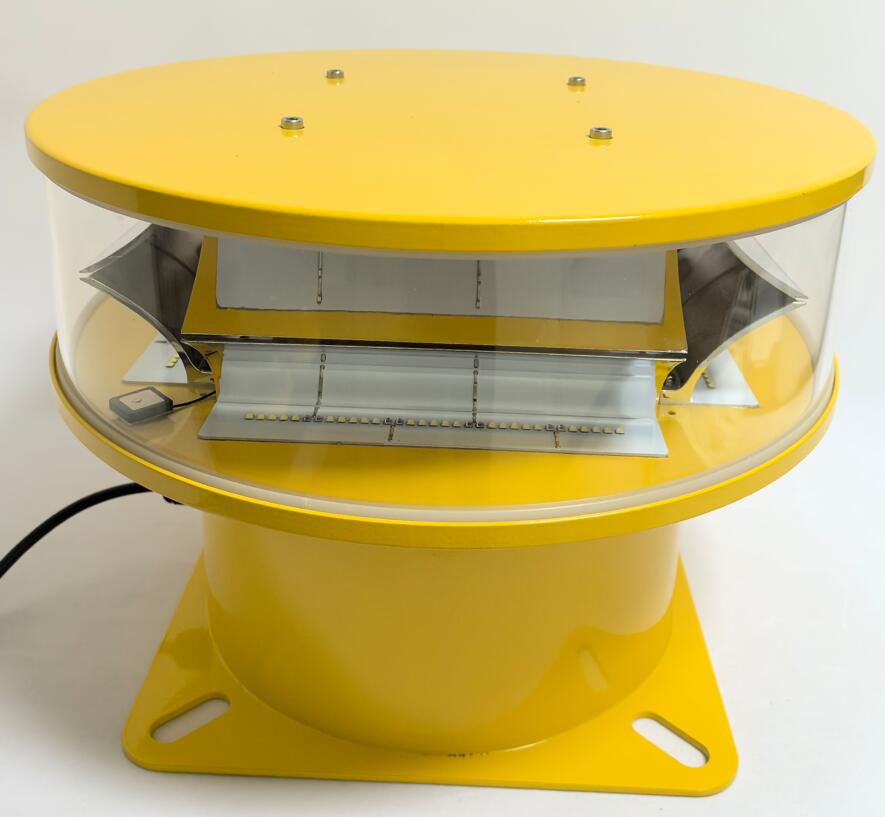As global air traffic continues to grow and urban landscapes reach unprecedented heights, the need for reliable visual warnings has never been more critical. Aircraft obstruction lights serve as essential sentinels, protecting both manned and unmanned aircraft from potential collisions with structures. These specialized lighting systems form a vital communication layer between stationary obstacles and moving aircraft, ensuring safe navigation through increasingly congested airspace.
This article examines the technological advancements, regulatory requirements, and emerging applications of aircraft obstruction lights in contemporary aviation safety systems.
The Evolving Role of Aircraft Obstruction Lights
Modern aviation faces three key challenges that aircraft obstruction lights help address:
Urban Airspace Congestion - With megacities building taller structures, proper marking becomes essential for helicopter routes and low-flying aircraft

Renewable Energy Expansion - Wind farms now account for over 20% of new obstruction lighting installations worldwide
Drone Traffic Management - The FAA predicts over 1 million commercial drones in US airspace by 2025, requiring enhanced obstacle visibility
Core Functions Include:
Day/night structure visibility assurance
| aircraft obstruction light |
Compliance with international aviation standards
All-weather operational reliability
Energy-efficient performance
Technological Breakthroughs in Obstruction Lighting
The latest generation of aircraft obstruction lights incorporates cutting-edge innovations:
Smart Lighting Systems
Adaptive brightness control using ambient light sensors
Wireless mesh networks for synchronized flashing patterns
Predictive maintenance capabilities via IoT connectivity
Advanced Light Sources
Next-gen LEDs with 100,000+ hour lifespans
| aircraft obstruction lights | aircraft obstruction lighting |
Laser-assisted visibility enhancement
Color-tunable systems for specific applications
Sustainable Solutions
Solar-hybrid power systems
Recyclable materials in housing construction
Low-power consumption designs
Regulatory Landscape and Compliance
Global standards for aircraft obstruction lights continue to evolve:
Key Regulations:
ICAO Annex 14 (Aerodromes) Volume I
FAA AC 70/7460-1L (Obstruction Lighting)
EASA CS-ADR-DSN (Design Specifications)
Certification Challenges:
Harmonizing standards across regions
Testing for extreme weather resilience
Documenting photometric performance
Meeting evolving environmental requirements
Specialized Applications Beyond Traditional Use
Aircraft obstruction lights now protect unique infrastructure:
Urban Air Mobility (UAM) Infrastructure
Vertiport marking systems
Dynamic lighting for air taxi corridors
Integrated with UTM (UAS Traffic Management)
Offshore Energy Installations
Saltwater-resistant designs
Subsea cable marking
Floating wind turbine lighting
Temporary Obstacle Marking
Pop-up systems for disaster response
Construction crane lighting
Event-specific aerial hazard marking
Future Trends in Obstruction Lighting Technology
The next decade will bring transformative changes:
Integrated Detection Systems
Radar-activated lighting
ADS-B transponder integration
Machine vision-enhanced recognition
Biomimetic Designs
Bioluminescent-inspired lighting
Polarized light patterns for better visibility
Adaptive camouflage prevention
Advanced Materials
Self-cleaning nano-coatings
Graphene-based conductive elements
Shape-memory alloys for damage resistance
Aircraft obstruction lights have evolved from simple warning beacons to sophisticated safety systems that actively communicate with air traffic. As we enter the era of urban air mobility and autonomous flight systems, these critical markers will play an even more vital role in collision prevention.
The future of aviation safety depends on continuous innovation in obstruction lighting technology - smarter, more sustainable, and more integrated solutions that can keep pace with our rapidly changing airspace environment. What remains constant is their fundamental purpose: to ensure that the invisible becomes visible, and the potentially dangerous becomes safely navigable.